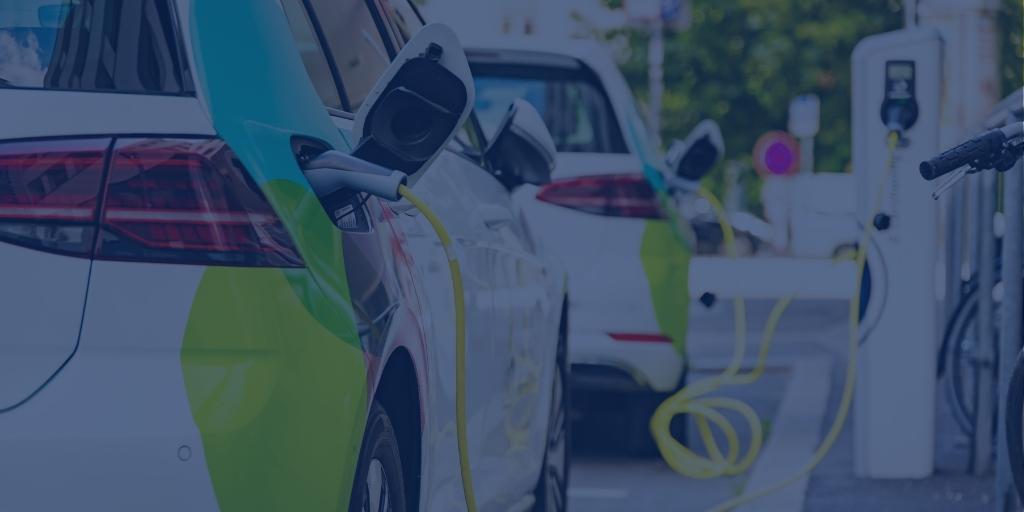Semiconductor global supply and demand had an outsize impact on automotive manufacturing in recent years. What does the future look like for chip-heavy vehicles?
New consumer electric vehicle adoption has increased around 50% a year since 2015, thanks in large part to improvements in battery performance and the expansion of semiconductors. And that trend is on the rise: Forecasts from IHS Markit predict vehicle sales to surpass 12.2 million in 2025 (up from 2.5 million in 2020), while Deloitte anticipates EV sales rates to grow more than 12 times by 2030. This is good news for chip makers, since EVs use on average 2,000 chips, about twice as many as combustion automobiles. But it’s bad news for the market, which is already dealing with a massive shortage of semiconductors, or chips. In fact, imbalances in semiconductor global supply and demand were a major factor behind deep declines in gas-powered automotive sales, which hit a deep low in Q2 2021.
Most auto manufacturers are still contending with chip shortages, with the notable exception of Tesla. Which poses the question: is the growth in the EV sector sustainable with the current challenges in global semiconductor supply and demand? It seems an exponential tipping point is on the horizon.
Recent years have brought unprecedented challenges to semiconductor global supply and demand and the automotive industry
Automobile manufacturers overall weathered lower demand during the start of the COVID-19 pandemic in 2020, with sales falling 15% due to rapid change in consumer behavior. This drove cutbacks throughout the auto manufacturing supply chain, ultimately slowing down or closing lines at the semiconductor fabricators, or fabs.
When demand from the auto manufacturers rebounded, the renewed demand on the fabs created a huge imbalance. Semiconductor fabs have their own supply chains, which include a significant investment in time for getting fabs online to produce new lines of semiconductors. This timing was compounded by unexpected external factors over the last two years, including water and power shortages, extreme weather, and geopolitical factors.
Now in 2022, it seems simple to look into the rearview mirror and point out the supply chain breakdowns. But, in reality, auto manufacturers faced truly unprecedented global events and supply chain challenges. The resolution of these shortages is not on the immediate horizon. Automobile manufacturers went on to experience losses up to $210 billion in 2021, and daily procurement challenges continue into 2022.
Is new fab construction the key to balance semiconductor global supply and demand?
Currently the Taiwan Semiconductor Manufacturing Company (TSMC) holds around 60% of the semiconductor market share. Long lead times in starting up new lines with a new chip supplier and the general lack of options create a tight market. Construction of new fabs seems unlikely to bring around a resolution to shortages in the near time, as semiconductor manufacturers need time and labor to get up and running. It’s more likely that any easing of semiconductor global supply and demand through 2022 will come from external factors like reduced demand from other sectors.
One major additional factor for the automotive industry: fabs want to build at the cutting edge of technology. As a result, long-tail product lines all face supply chain problems when they are continuing mainstream product lines versus new products. These challenges are not unique to the automotive industry, however. They are common to many manufacturers creating products for larger user bases because they are moving with mainstream products while also innovating and producing newer designs.
Finding solutions for the expansion of EVs and semiconductor demand
Building new fabs to meet demand is just part of the solution. Longer term, there are few ways that global semiconductor supply and demand might even out.
One example is that EV companies starting fresh might design more efficient ways to use semiconductors. Closing tech gaps between the cutting-edge fabs and the long-tail automotive manufacturers could also ease supply and demand challenges. As new vehicle designs are introduced, they will leverage the most current technology. Fabs will continue their strategic investments in new fabs that build the new tech. The long tail on the hybrids and even later combustion models will fade out as newer technologies are introduced. Ultimately, more EVs mean more current tech and more demand in line with what supply semiconductor fabs want to produce.
A stronger, more transparent information exchange between suppliers and buyers throughout the automotive supply chain would strengthen the position of all players. The current supply chain is highly complex, and transparency could break down hurdles that currently challenge global semiconductor supply and demand.
Easing up on just-in-time and allowing a buffer stock of critical components would also help automotive manufacturers. Buffer stock had largely fallen out of favor due to perceptions as drag on the balance sheet. Given the recent supply challenges, though, it’s likely that automotive manufacturers will find ways to incorporate a buffer as a favorable addition.
To summarize: EV expansion will continue to impact global semiconductor supply and demand, while creative strategies beyond new fab construction hold promise for easing current challenges.
Read more
- Service: Global Sourcing
- Are You Fit or Fragile? Find Success By Taking The Long View On Electronic Supply Chain Disruptions
- To Survive In The Electronics Shortage Market, Get Help Strengthening Supply Chain Resilience
- How to Plan Your Electronics Inventory During Unprecedented Global Events

